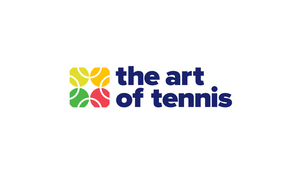Donkey Drops

Why is it called a Donkey Drop? I really don’t know. I even googled it but had no luck. So for whatever reason in tennis, we were taught and continue to teach that a Donkey Drop is a way to start a tennis rally by drop feeding and hitting the ball.
At Scarborough Tennis Academy, we first teach ‘Train Tennis’ for our Super Mini class as that teaches them how to push the ball forwards with their racquet on both the front (forehand) and back (backhand) side of the racquet.
After ‘Train Tennis’ though we want the kids to be able to hit the ball over the net. We are big on players being independent and starting their own rally rather than a coach fed ball. We call it hands free coaching.
So the Donkey Drop is very teachable and relatively easy to grasp for most kids 5 years and over. But there are some areas that can make it harder and also create bad habits for as they get older and can play a better level of tennis.
The other arm – forehand
We want the make sure the other arm is rotated. So in a modern forehand the left arm (or what we call ‘Gate’) will rotate all the way to the side 90 degrees. But when teaching the donkey drop forehand, dropping the ball when the arm is at 90 degrees will mean they drop it and hit it too far back. When their left arm is straight in front it will make them hit too close to their legs and the racquet will go more like a rocket (down /up) than an aeroplane taking off the runway (forward/up)
So the best way is to have them start at 90 degrees and then start opening their gate and when its half open (45 degrees) then stop and drop the ball ready to hit.
This way they drop it in a good spot away from their body and they start to learn the feel of rotation.
The other arm – backhand
We didn’t used to but now we teach backhand Donkey Drops as well. How to drop the ball and hit with a two handed backhand is tricky but in our experience starting with the other arm underneath the handle with the grip resting on the inside of forearm is best. This way the ball gets dropped underneath the racquet and the kids have time to get their other arm on top of the handle at about the same time as the ball hits the ground.
The drop
Kids love to bounce the ball rather than let the ball bounce. In other words, no force into the ground is required otherwise the ball bounces back up to high. You don’t want the kids hitting the ball much higher than their waist to begin so just letting the ball fall out of the fingers with no force is a huge factor in how successful they are at hitting it over. The backhand drops seem to have less problem with this but with forehands many kids will continue to push the ball hard into the ground!
The stances
It seems most Donkey Drops are taught from a neutral type of stance. This can be a good starting point but I see Donkey Drops as an opportunity to teach some open stance also. If only the neutral stance is taught, I see problems with how well they will move laterally and hit the ball. So try and teach what we call ‘Push Through’s’ and ‘Pull Back’s’ through the Donkey Drops.
Timing
Like all shots getting the timing right between the bounce and hit is critical. Some less coordinated kids are in a rush to hit the ball and separating the bounce and the hit doesn’t come naturally. By encouraging them to say ‘Bounce / Hit’ or ‘1 / 2’ can be helpful with this timing.
Back to receiver position
After the Donkey Drop players should be encouraged to be in back in a ready position. Once their job as ‘hitter’ has finished then they immediately become ‘receiver’. Being in that ‘receiver’ position when their partner has hit the next ball should be the minimum aim.
All this for Donkey Drops?
So it seems crazy that something so simple can have so much that can go wrong. But if it is done well then it can help with more advanced technique later on down the track. If its done badly then it can teach bad habits from the start.
For those of you in Perth interested in tennis lessons for kids and adults, go to www.scarboroughtennis.com.au
Thanks for reading
Rick Willsmore
The Art of Tennis














